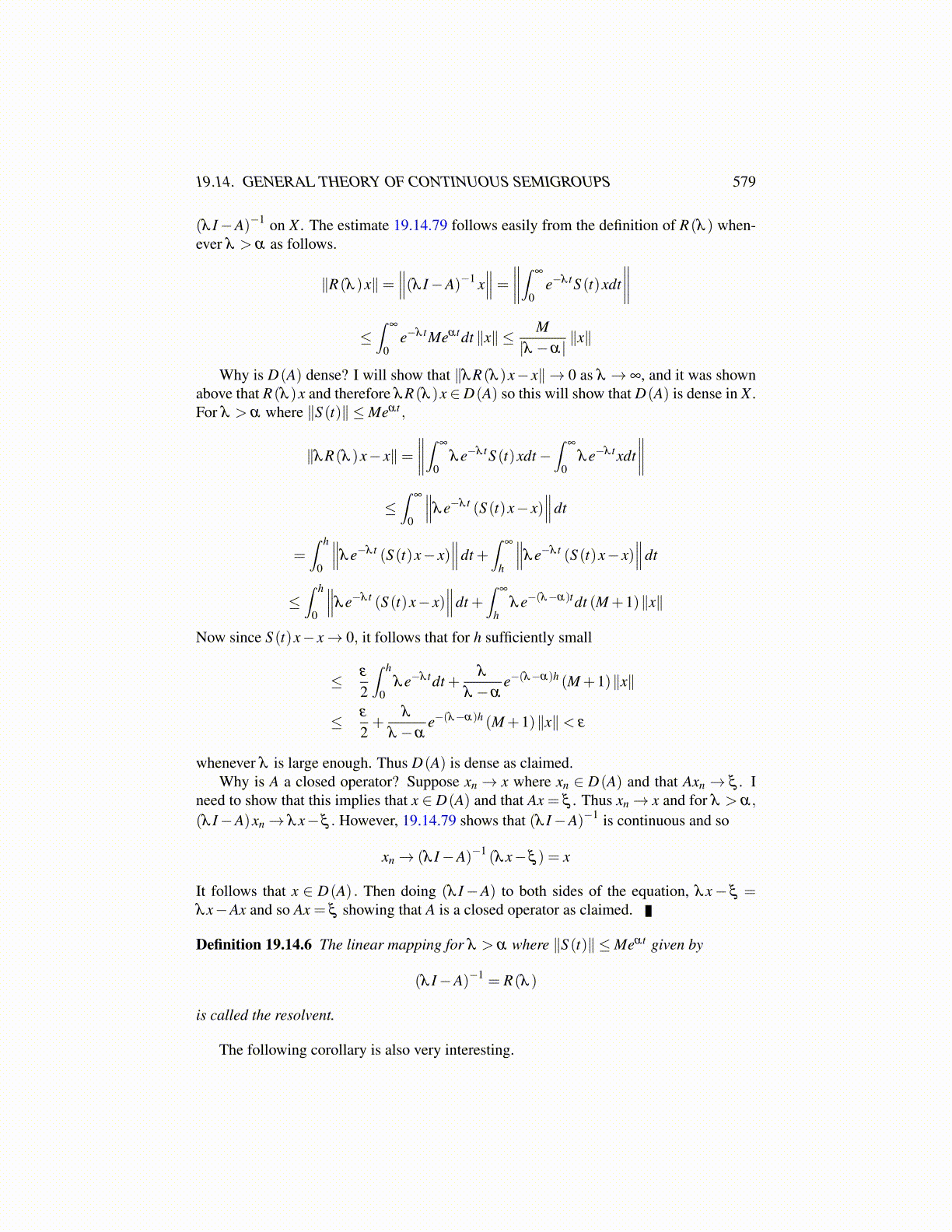
19.14. GENERAL THEORY OF CONTINUOUS SEMIGROUPS 579
(λ I−A)−1 on X . The estimate 19.14.79 follows easily from the definition of R(λ ) when-ever λ > α as follows.
∥R(λ )x∥=∥∥∥(λ I−A)−1 x
∥∥∥= ∥∥∥∥∫ ∞
0e−λ tS (t)xdt
∥∥∥∥≤∫
∞
0e−λ tMeαtdt ∥x∥ ≤ M
|λ −α|∥x∥
Why is D(A) dense? I will show that ∥λR(λ )x− x∥ → 0 as λ → ∞, and it was shownabove that R(λ )x and therefore λR(λ )x ∈D(A) so this will show that D(A) is dense in X .For λ > α where ∥S (t)∥ ≤Meαt ,
∥λR(λ )x− x∥=∥∥∥∥∫ ∞
0λe−λ tS (t)xdt−
∫∞
0λe−λ txdt
∥∥∥∥≤∫
∞
0
∥∥∥λe−λ t (S (t)x− x)∥∥∥dt
=∫ h
0
∥∥∥λe−λ t (S (t)x− x)∥∥∥dt +
∫∞
h
∥∥∥λe−λ t (S (t)x− x)∥∥∥dt
≤∫ h
0
∥∥∥λe−λ t (S (t)x− x)∥∥∥dt +
∫∞
hλe−(λ−α)tdt (M+1)∥x∥
Now since S (t)x− x→ 0, it follows that for h sufficiently small
≤ ε
2
∫ h
0λe−λ tdt +
λ
λ −αe−(λ−α)h (M+1)∥x∥
≤ ε
2+
λ
λ −αe−(λ−α)h (M+1)∥x∥< ε
whenever λ is large enough. Thus D(A) is dense as claimed.Why is A a closed operator? Suppose xn → x where xn ∈ D(A) and that Axn → ξ . I
need to show that this implies that x ∈ D(A) and that Ax = ξ . Thus xn→ x and for λ > α,
(λ I−A)xn→ λx−ξ . However, 19.14.79 shows that (λ I−A)−1 is continuous and so
xn→ (λ I−A)−1 (λx−ξ ) = x
It follows that x ∈ D(A) . Then doing (λ I−A) to both sides of the equation, λx− ξ =λx−Ax and so Ax = ξ showing that A is a closed operator as claimed.
Definition 19.14.6 The linear mapping for λ > α where ∥S (t)∥ ≤Meαt given by
(λ I−A)−1 = R(λ )
is called the resolvent.
The following corollary is also very interesting.